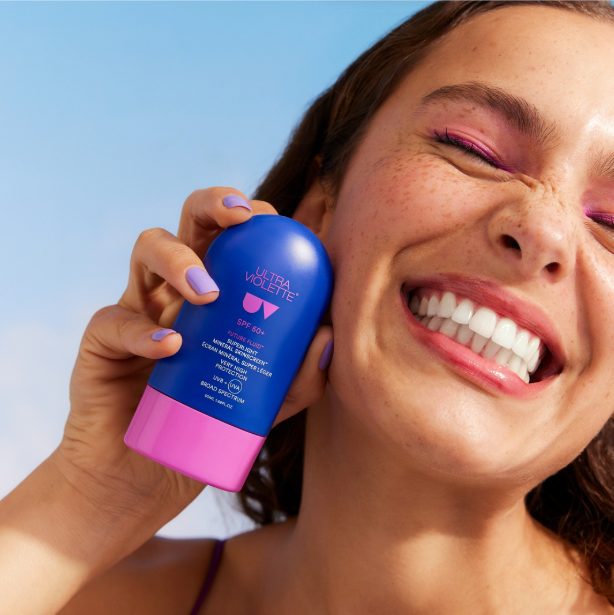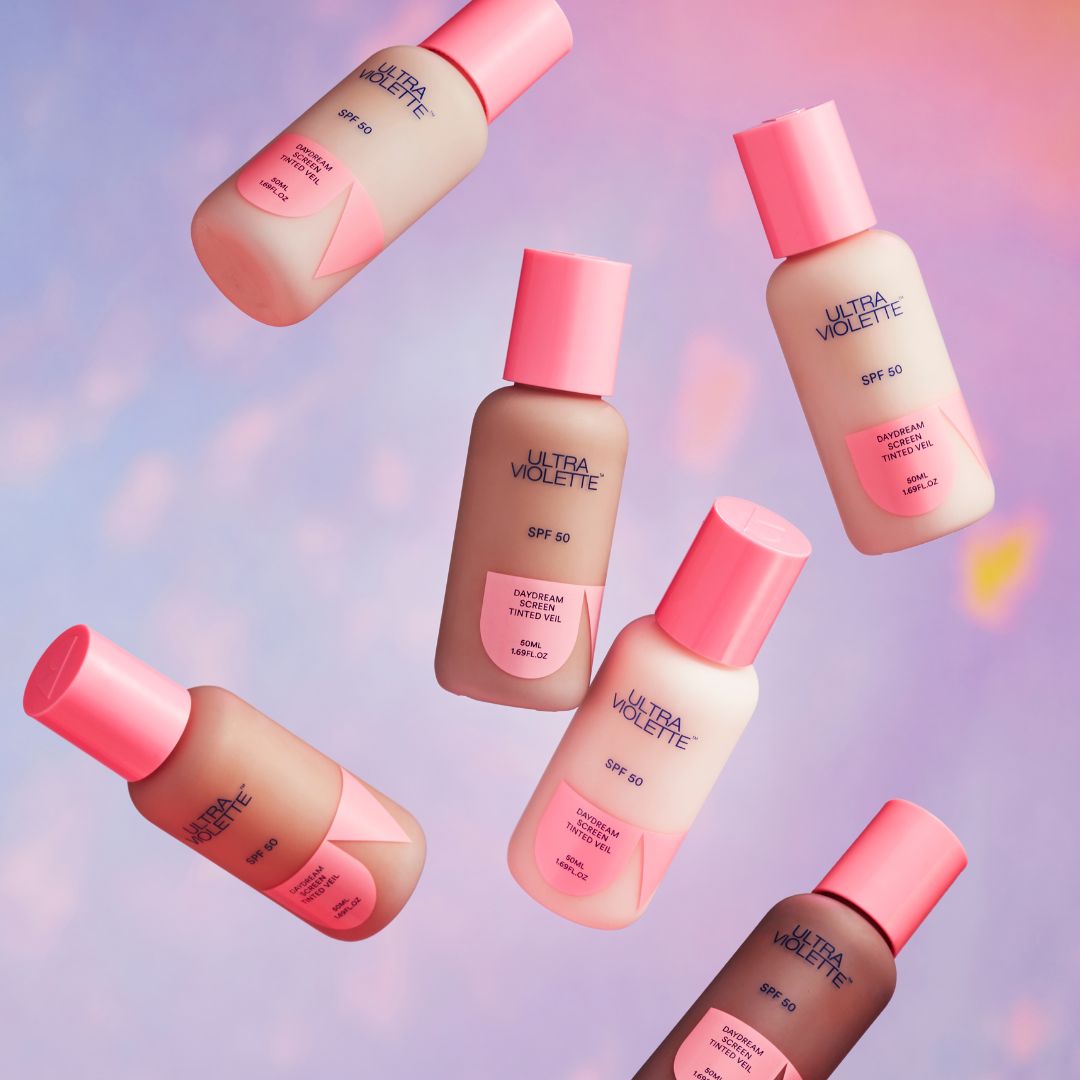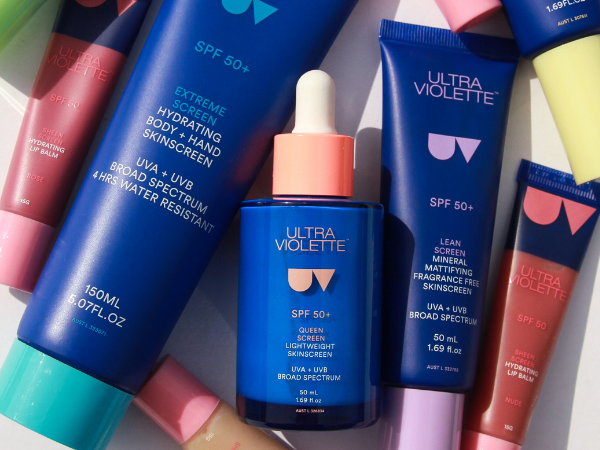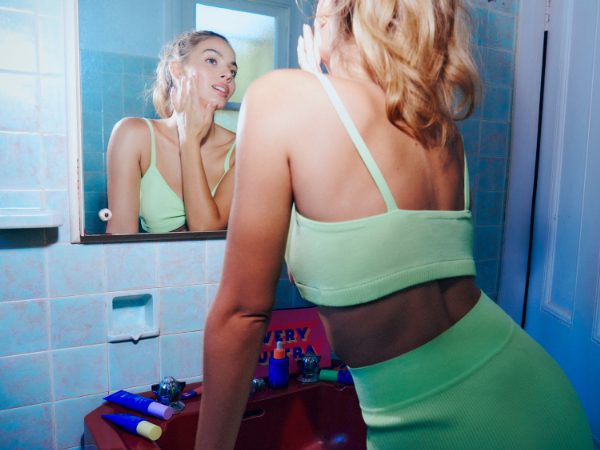You must be here because you hear the news. We’ve just welcomed our fourth facial SKINSCREEN™ into the fam. Exciting! But also confusing. Now there’s another A+ skin sweetening formula to choose from. Sorry not sorry.
Well let’s go through some of your frequently queried questions about Lean Screen so you can get to know her a little better!
I don’t want to look like a certain President/ghost. Does it leave an orange hue or white cast?
Lol. Yikes! We feel that. It’s a tricky thing to get right because mineral UV filters (zinc and titanium oxide) are both white powders. The product itself has a slight tint so that it doesn’t apply completely white, but it actually rubs in clear and doesn’t leave any colour/tint on the skin.
So it’s mattifying, does that mean drying?!
No way. We’ve struck the perfect balance between a matte finish and hydration thanks to ingredients like Pentavitin which offer 72 hrs of hydration.
That being said, for most people this won’t replace your moisturiser and should instead be layered on top.
What’s the difference between Lean and Clean Screen?
Just like your eyebrows, they’re sisters not twins. Both contain Pentavitin for hydration, are fragrance and alcohol free. Lean and Clean will also protect you from the whole solar spectrum of UV damage. Generally, both are good for sensitive, reactive, combo, oily, eczema and acne prone skin too.
Now to the nitty gritty.
Lean Screen is a zinc-based mineral SPF50+, with a matte finish and a cream texture. The zinc has anti-inflammatory and soothing properties which makes Lean slightly better for super sensitive skin, and skin prone to eczema and rosacea. The matte finish will also make it ideal for combo oily skin types.
Clean Screen is a partial mineral SPF30, with a natural-skin finish and a lightweight gel texture. Due to the lower SPF rating, it’s lighter on the skin making it maybe a little better for acne prone skin.
The natural finish will also make it ideal for normal-combo skin types.
More of a visual learner? Here’s a venn diagram to clear things up.
What’s the difference between Lean and Supreme?
Both Lean and Supreme Screen offer SP50+ protection from the whole solar spectrum and both contain Pentavitin and Kakadu Plum. They’re also free from any trace of sticky white grease but there are a few key differences.
Lean Screen is a mineral, zinc-only formula, that’s fragrance and alcohol free with a matte finish. It’s more suited to combo-oily and sensitive skin or anyone looking for a matte base for makeup.
Supreme Screen uses chemical UV filters with a light clean scent, a lightweight cream texture and a satin finish. It’s more suited to normal-dry skin or anyone looking for a hydrated base for makeup.
Still confused? Take THIS QUIZ to find your SPF MVP.
So it’s fragrance free… But what does it smell like?
I’ve been wearing it for weeks and have been sniffing a pump of Lean on the back of my hand for the last half hour and I still don’t know how to answer this question.
It doesn’t smell like nothing, but it also doesn’t smell like something.
Either way, you can smell this nothing/something for a moment when applying and then never again. It’s 100% inoffensive.
How do I wash it off at the end of the day? Others I’ve tried require paint stripper to remove.
Woah leave the paint stripper at Bunnings (or the garage) gurrrrl. Like all our skinscreens, Lean Screen is designed to stay on your face and not slide around. So, while water alone isn’t going to get rid of it, treat your skinscreen like makeup and let a double cleanse do all the hard work for you.
Everyone’s talking about physical/mineral/organic/chemical and I’m lost. What’s the deal?
They actually work pretty similarly, both need to be applied in advance of any sun exposure, in the correct amount, and both absorb UV radiation which prevents it from reaching the skin.
Physical/mineral/inorganic filters (Zinc Oxide and Titanium Dioxide) also scatter or reflect a small amount of UV radiation which has led to the common misconception that chemical filters = UV radiation absorption and mineral = reflection.
Chemical/organic sunscreens tend to be great for: feeling beautiful to wear, being lightweight, UVA1 protection, melasma or pigmentation sufferers. Mineral sunscreens tend to be better for: skin sensitivities, inflamed skin.
Lucky for y’all WE HAVE BOTH💁♀
Is it safe whilst pregnant and breastfeeding?
Absolutely. So is our whole range!
I have a VERY specific question and you haven’t covered it here. What should I do?!
Shoot us an email! We love to talk about our favourite brunch spots and tv shows but can also multitask and help with any of your SKINSCREEN™ concerns.





